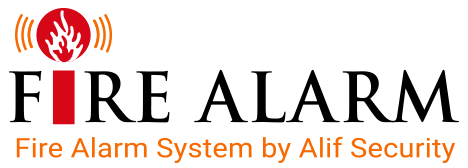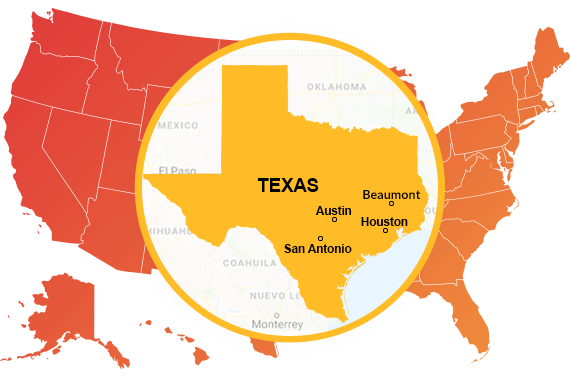Important Life Lessons Bring Safety Messages to your home.
MY FATHER, Woodrow; Clara, his wife of 35 years; and Mamie, my favorite aunt, all passed on in the last five years. Although the collective loss weighs heavily on me, I am comforted by remembering the things that each of them taught me about life, compassion, and the importance of enjoying everyday simple pleasures. Despite the fact that I’ve dedicated a significant part of my career to reaching at-risk groups with safety messages, they also taught me a lot about reaching older adults.
In their later years, each of my beloved relatives gave me plenty of opportunities, much to my chagrin, to discuss safety issues with them. More often than not, these opportunities involved my gingerly pointing out a hazard that, if I left uncorrected, I was sure would cause some permanent injury. One such opportunity presented itself on a trip to Northern Minnesota to visit my Aunt Mamie and my Uncle Ed. When we drove in their car, I noticed immediately that they were not wearing their seatbelts. When I slipped into professional mode and told them the importance of using their seatbelts, they looked at each other, didn’t say a word and didn’t fasten their seatbelts.


A month or two later, Aunt Mamie wrote to say that she and Ed had bought a new car and from that day forward, they would always wear their seatbelts. Sure enough, on every subsequent visit, they were religiously using their seatbelts. This incident, besides bringing up cherished memories, remind me that people can and do make safety changes at all stages of life and that people will use new safety technology. Although they may not give us the immediate reaction we want, if using a new and improved product makes sense to them, they will.
Public fire safety educators have a great mission to reach one of the fastest growing high-risk-to-fire populations, people age 65 or older. NFPA’s Remembering when: A Fire and Fall Prevention Program for Older Adults can help educators reach older adults with fire and fall prevention messages. But older adults vary in their physical and mental abilities and in their risk of death and injury from fires and falls. We know, for example, that people older than 85 or people with limited abilities are at a greater risk. In fact, people age 85 and older have a four times greater risk of sustaining an injury after a fall, as well.


NFPA is sponsoring a scholarship program for fire safety educators and representatives from home visiting organizations to attain its goal of reaching the most vulnerable elderly. The program will bring fire safety educators and representatives from home visiting organizations to Boston to participate in an event that will show participants how to integrate key messages of Remembering When into home visits that visiting nurses and home health care professionals conduct everyday. We hope that the local fire departments working with the visiting agencies will make these messages a permanent part of their visits to older adults.
We will award scholarships to 40 groups of firefighter/home visit organization representative pairs. The application deadline is August 1, 2007. More information, including the application, is available at NFPA’s Web site: http://www.nfpa.org/.
Think of the older adults in your life. Visit or call them today to tell them how much you love them. While you’re at it, don’t be afraid to help them make changes in their homes to increase their safety. I don’t believe the adage “You can’t teach an old dog new tricks." After all, NFPA’s Sparky the Fire Dog has been around a long time and manages to keep up with NFPA’s always progressing safety messages.
- Aldine
- Alvin
- Ames
- Anahuac
- Angleton
- Arcola
- Atascocita
- Austin
- Bacliff
- Bailey Prairie
- Barker
- Barrett
- Bay City
- Bayou Vista
- Baytown
- Beach City
- Beasley
- Beaumont
- Bellaire
- Boling
- Bonney
- Brazoria
- Brazos Country
- Brookshire
- Brookside Village
- Bunker Hill Village
- Channelview
- Cinco Ranch
- Clear Lake Shores
- Cleveland
- Cloverleaf
- Clute
- Conroe
- Corsicana
- Cove
- Crosby
- Cumings
- Cut And Shoot
- Cypress
- Damon
- Danbury
- Dayton
- Dayton Lakes
- Deer Park
- Dickinson
- East Bernard
- El Lago
- Fairchilds
- Fifth Street
- Fort Bend
- Four Corners
- Freeport
- Fresno
- Friendswood
- Fulshear
- Galena Park
- Galveston
- Greatwood
- Guy
- Hardin
- Harris
- Hedwig Village
- Hempstead
- Highlands
- Hillcrest
- Hilshire Village
- Hitchcock
- Hockley
- Holiday Lakes
- Houston
- Huffman
- Hufsmith
- Humble
- Hungerford
- Hunters Creek Village
- Huntsville
- Iago
- Iowa Colony
- Jacinto City
- Jamaica Beach
- Jersey Village
- Katy
- Kemah
- Kendleton
- Kenefick
- Kingwood
- La Marque
- La Porte
- Lake Jackson
- League City
- Liberty
- Liverpool
- Lorena
- Magnolia
- Manvel
- Meadows Place
- Mission Bend
- Missouri City
- Mont Belvieu
- Montgomery
- Morgans Point
- Nassau Bay
- Needville
- New Territory
- North Cleveland
- North Houston
- Oak Island
- Oak Ridge North
- Old River-Winfree
- Orange
- Orchard
- Panorama Village
- Pasadena
- Pattison
- Patton Village
- Pearland
- Pecan Grove
- Pine Island
- Pinehurst CDP
- Piney Point Village
- Pleak
- Plum Grove
- Port Arthur
- Porter
- Porter Heights
- Prairie View
- Richardson
- Richmond
- Richwood
- Roman Forest
- Rosenberg
- Rosharon
- San Antonio
- San Felipe
- San Leon
- Santa Fe
- Seabrook
- Sealy
- Sheldon
- Shenandoah
- Shoreacres
- Silsbee
- Simonton
- South Houston
- Southside Place
- Splendora
- Spring
- Stafford
- Stagecoach
- Sugar Land
- Taylor Lake Village
- Texas City
- The Woodlands
- Thompsons Alief
- Tiki Island
- Todd Mission
- Tomball
- Waller
- Wallis
- Webster
- West Columbia
- West University Place
- Weston Lakes
- Willis
- Woodbranch
- Woodloch


